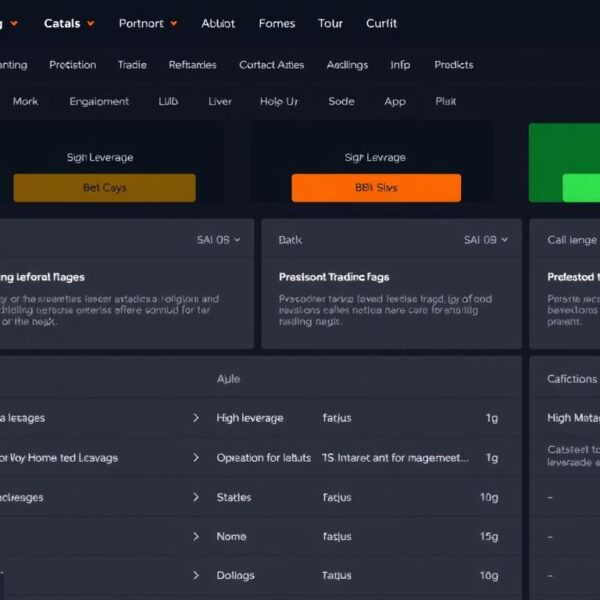The NASDAQ Composite index has witnessed dramatic fluctuations throughout its history, with an astonishing 800% surge between 1995 and March 2000, followed by a devastating 78% crash by October 2002. More recently, in September 2020, it hit an all-time high above 12,000, only to drop by over 9% within a week, entering a technical correction.
This volatility underscores the dynamic nature of the stock market, particularly for tech stocks and innovative companies. The NASDAQ emerged as a revolutionary force, providing a platform for companies overlooked by traditional exchanges.
NASDAQ’s transformation from an over-the-counter quotation system to the home of the world’s most valuable technology companies is a testament to its impact on trading and investment strategies.
Key Takeaways
- The NASDAQ Composite index has experienced significant fluctuations, including an 800% rise and a subsequent 78% crash.
- NASDAQ revolutionized the financial world by creating a platform for innovative companies.
- The exchange transformed into a hub for valuable technology companies, reshaping investment strategies.
- NASDAQ’s history provides insights into market psychology and innovation cycles.
- The relationship between technology and finance has evolved significantly through NASDAQ’s journey.
The Birth of a Revolutionary Market
NASDAQ’s birth was a response to the inefficiencies of the over-the-counter market, leveraging technology for a better trading experience. In 1971, it was founded as the National Association of Securities Dealers Automated Quotations, transforming the way companies were listed and traded.
From OTC to Electronic Trading Pioneer
The over-the-counter (OTC) marketplace was fragmented and inefficient, with stocks not listed on major exchanges being traded through a network of dealers. NASDAQ’s electronic quotation system was a paradigm shift, offering real-time price quotes and paving the way for the world’s first electronic stock market. This innovation allowed for more efficient price discovery and trading compared to traditional floor-based exchanges, revolutionizing the business of stock trading.
Early Vision: Creating a Market for Innovation
Early visionaries behind NASDAQ recognized the need for a market that could accommodate innovative companies, particularly those in emerging technology sectors. The market’s structure was designed to provide capital access to growth-oriented companies, which traditional financial institutions viewed as too risky. This vision played a crucial role in NASDAQ’s history and its impact on the world of finance, shaping the markets as we know them today.
Tech Stocks: The Driving Force Behind NASDAQ’s Rise
NASDAQ’s ascension to prominence was largely driven by the emergence of tech stocks. The exchange became synonymous with innovation and technological advancement, attracting companies that were redefining the business landscape.
The Emergence of Technology as an Investment Sector
The 1980s and early 1990s saw technology emerge as a distinct investment sector, with NASDAQ becoming the natural home for these innovative companies. Early tech giants like Microsoft (1986), Intel, and Oracle chose NASDAQ for their public listings, establishing the exchange’s reputation as the technology market. This period marked a significant shift in investment trends, as investors began to recognize the potential of technology-driven businesses.
The emergence of software, personal computing, and early internet companies created entirely new revenue streams and business models. These new-age businesses prioritized growth and market share over immediate profitability, challenging traditional investment metrics.
How Tech Companies Reshaped Traditional Investment Thinking
Tech companies introduced new business models that focused on intellectual property, high R&D costs, and minimal physical assets. This led to the development of new valuation models that considered factors like “network effects” and “first-mover advantage.” Investors had to adapt to these changes, rethinking their strategies to accommodate the unique characteristics of tech stocks.
The role of venture capital also became increasingly important, as it provided funding for pre-IPO tech companies, creating a pipeline of future NASDAQ listings. As a result, NASDAQ continued to grow, driven by the success of its listed tech stocks, which in turn contributed to the overall growth of the NASDAQ Composite.
The Dot-Com Era: Irrational Exuberance
A perfect storm of factors led to the dot-com bubble, characterized by excessive speculation and inflated valuations. The late 1990s saw an unprecedented surge in technology stocks, with the NASDAQ Composite index rising by 800% between 1995 and March 2000. This period was marked by a general belief that traditional valuation metrics no longer applied to tech companies.
The Late 1990s Tech Stock Explosion
Several factors fueled the boom in tech stocks during the late 1990s. Declining interest rates, capital gains tax reductions, and widespread internet adoption created a fertile ground for speculation. The belief that the internet represented a “new economy” where old rules of business no longer applied further fueled investor enthusiasm.
- The NASDAQ Composite index experienced a meteoric rise as investors poured money into tech stocks.
- Many internet companies achieved multi-billion-dollar valuations despite having no profits and sometimes minimal revenue.
- The “get big fast” mentality dominated business strategies, with companies prioritizing user acquisition over sustainable business models.
Venture Capital and the “Get Big Fast” Mentality
Venture capital flowed freely into internet startups, many of which rushed to public offerings with minimal revenue and no clear path to profitability. The period saw the emergence of “dot-com” as a powerful suffix that could instantly boost a company’s valuation regardless of its business fundamentals.
As
“the dot-com bubble was a time when investors were willing to throw money at any company with a ‘.com’ at the end of its name”
, reflecting the irrational exuberance of the time. Companies spent lavishly on marketing, infrastructure, and employee perks, burning through capital at unsustainable rates in the race for market dominance.
The dot-com era was characterized by excessive speculation, with investors believing that the internet represented a new paradigm. This belief led to a significant shift in investor psychology and market dynamics.
March 10, 2000: The Day the Bubble Peaked
March 10, 2000, is remembered as the day the NASDAQ Composite peaked, more than doubling its value from the previous year. On this day, the NASDAQ Composite stock market index reached 5,048.62, with an intraday high of 5,132.52. This milestone marked the culmination of the tech stock bubble, where speculation and investment in technology companies had driven the index to unsustainable heights.
Record-Breaking NASDAQ Composite
The NASDAQ Composite’s price-earnings ratio had skyrocketed to 200, far exceeding historical norms and even surpassing the peak P/E ratio of 80 observed during Japan’s asset bubble in 1991. Companies with minimal revenue were commanding billion-dollar valuations, fueled by excessive spending on marketing and increasingly speculative investments. The market was characterized by irrational exuberance, with investors seemingly disregarding traditional valuation metrics.
| Index | Peak Value | P/E Ratio |
|---|---|---|
| NASDAQ Composite | 5,048.62 | 200 |
| S&P 500 | N/A | Normal Range |
Warning Signs That Were Ignored
Despite warning signs being abundant, they were largely ignored by investors. Barron’s magazine published a prescient cover story titled “Burning Up; Warning: Internet companies are running out of cash—fast” just days after the peak, highlighting the precarious financial situation of many tech companies. The Federal Reserve had begun raising interest rates, creating pressure on highly leveraged tech companies dependent on continued capital infusions. As the divergence between the NASDAQ and the S&P 500 grew, it indicated a rotation from technology to value stocks was already underway.
The Spectacular Crash: When Reality Hit
The dot-com bubble’s collapse led to a spectacular crash on NASDAQ, marking a significant downturn in the tech-heavy index. By 2001, the bubble’s deflation was in full swing, with most dot-com companies ceasing trading after exhausting their venture capital and IPO funds without generating profits.
Freefall of the NASDAQ Composite
The NASDAQ Composite index plummeted 78% from its peak in March 2000 to its trough in October 2002, erasing all gains made during the bubble. This drastic decline was not gradual; on April 14, 2000, the NASDAQ fell 9% in a single day, culminating a week that saw a 25% drop as investors were forced to sell stocks ahead of Tax Day.
Consequences for Companies and Investors
The crash exposed flawed business models, excessive spending, and fraudulent practices among companies that were once market darlings. Telecommunications companies that had invested heavily in infrastructure faced bankruptcy as demand failed to materialize. The September 11, 2001, attacks further accelerated the market decline, compounding the tech sector’s problems with broader economic uncertainty.
| Company | Sector | Fate |
|---|---|---|
| Pets.com | Online Shopping | Ceased Trading |
| Webvan | Online Grocery Delivery | Bankrupt |
| Boo.com | Online Fashion Retail | Ceased Trading |
| WorldCom | Telecommunications | Bankrupt |
The aftermath of the crash saw investor confidence erode further due to accounting scandals at major companies like Enron and WorldCom, leading to stricter regulations and oversight. The NASDAQ’s collapse was both swift and devastating, wiping out $5 trillion in market capitalization.
Phoenix Rising: NASDAQ’s Post-Bubble Recovery
In the aftermath of the dot-com bubble, NASDAQ’s recovery was marked by the emergence of new tech giants. The burst of the bubble had left the tech industry reeling, with many companies struggling to survive. However, some tech companies managed to not only survive but thrive in the post-bubble era.
Survivors Who Became Giants
Companies like Amazon and eBay transformed their business models to adapt to the new market reality. Amazon evolved from an online bookstore to a diversified e-commerce giant, while eBay’s auction marketplace continued to thrive, demonstrating the power of platform business models. Google refined its search technology and developed a revolutionary keyword-based advertising model that would eventually dominate online advertising.
These companies shared key characteristics that enabled them to emerge stronger from the crash: sound business fundamentals, realistic growth projections, and services that delivered genuine value to customers. The table below highlights the growth of these companies in the post-bubble era.
| Company | Pre-Bubble Revenue (1999) | Post-Bubble Revenue (2004) | Growth Rate |
|---|---|---|---|
| Amazon | $1.64 billion | $6.92 billion | 322% |
| eBay | $224 million | $3.27 billion | 1360% |
| N/A | $3.19 billion (2003) | N/A |
New Rules and Investor Caution
The dot-com bubble burst led to a significant shift in investor behavior and regulatory policies. The Sarbanes-Oxley Act of 2002 introduced new financial reporting requirements and corporate governance standards in response to the accounting scandals that accompanied the crash. Investors became more discerning, demanding clear paths to profitability rather than just growth metrics, leading to more sustainable business practices in the tech sector.
The recovery of NASDAQ in the post-bubble era was a testament to the resilience of the tech industry and the ability of companies to adapt to changing market conditions. As the market recovered, investors became more cautious, and companies were forced to adopt more sustainable business models, leading to a more stable and mature tech industry.
Modern NASDAQ: Home of Today’s Tech Titans
As the home of today’s tech titans, NASDAQ has become synonymous with innovation and technological advancement. The exchange has undergone significant transformation since its inception, evolving into a platform that hosts some of the world’s most influential and valuable companies.
The NASDAQ stock market is now dominated by technology giants, often referred to as FAANG (Facebook/Meta, Apple, Amazon, Netflix, Google/Alphabet), along with other tech leaders like Microsoft, Tesla, and Nvidia. These companies have not only reshaped the technology sector but have also had a profound impact on the global economy.
The FAANG Effect and Beyond
The influence of FAANG stocks on the NASDAQ composite index cannot be overstated. These companies have grown to become some of the largest and most profitable businesses in the world, driving the index to new heights. Beyond FAANG, other tech giants have also made significant contributions to the market, pushing the boundaries of innovation and investment.
The data speaks for itself: after significant sell-offs, the NASDAQ tends to bounce back, with an average gain of 8.7% three months later, according to Kensho. This resilience underscores the strength and potential of the tech sector.
| Company | Market Influence | Revenue Growth |
|---|---|---|
| Apple | High | Strong |
| Amazon | High | Strong |
| Google/Alphabet | High | Strong |
NASDAQ’s Role in the Modern Economy
NASDAQ’s electronic trading platform has become a model for stock markets worldwide, powering more than 70 exchanges across 50 countries. The exchange continues to attract innovative companies in emerging fields such as artificial intelligence, clean energy, biotechnology, and blockchain, maintaining its position at the forefront of economic transformation.
The impact of NASDAQ-listed companies on the global economy is profound, with seven of the world’s ten most valuable companies trading on the exchange as of 2023. As technology continues to expand into every sector of the economy, NASDAQ remains a critical platform for growth and innovation.
Conclusion: NASDAQ’s Enduring Legacy in Market History
The story of NASDAQ is one of innovation, resilience, and the transformative power of technology. As we reflect on its journey, it’s evident that NASDAQ has played a pivotal role in shaping the stock market and fostering growth in the tech sector.
NASDAQ’s evolution has been marked by significant milestones, from its inception as an electronic quotation system to becoming the home of the world’s most valuable tech companies. The exchange has been both a catalyst for and a beneficiary of technological innovation, creating a virtuous cycle that has accelerated the digital transformation of the global economy.
Despite experiencing periods of volatility, including the devastating dot-com crash, NASDAQ has demonstrated remarkable resilience. The speculative excess of the dot-com era funded critical internet infrastructure and software development, enabling the digital world we inhabit today. As venture capitalist Fred Wilson noted, “Nothing important has been built without irrational exuberance.”
Today, NASDAQ remains a barometer of innovation and technological progress, hosting companies that are reshaping the world. Its history offers valuable lessons for investors about risk, valuation, and distinguishing between genuine innovation and speculative excess.






